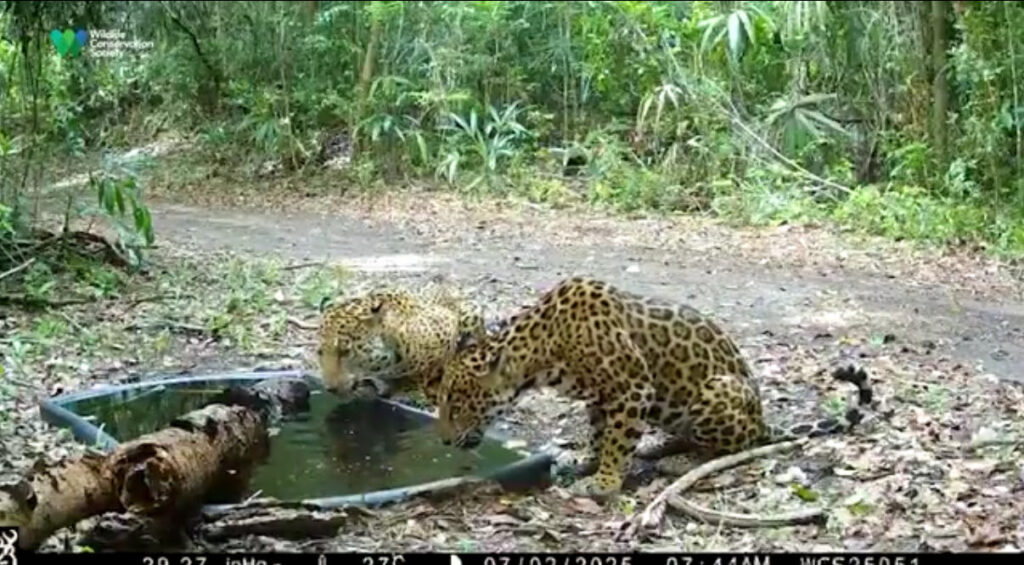GUATEMALA, July 25, 2025 — As the climate heats up across Mesoamerica, protected areas in northern Guatemala are facing growing ecological challenges—most notably, a severe shortage of water that threatens the survival of wildlife species in the region. In response, conservation organizations have taken innovative action to protect biodiversity in two of the country’s most vital ecosystems: Laguna del Tigre National Park and Mirador-Río Azul National Park.

To address this urgent issue, artificial waterholes have been strategically installed at key points throughout the parks. These water sources—constructed from durable materials to withstand the region’s extreme conditions—are placed in locations where wildlife is most vulnerable, despite the logistical complexities of reaching these remote jungle environments.
Camera traps have captured images of a variety of wildlife using the waterholes, including tapirs, puma, jaguars, deer, margays, snakes and more. These observations offer rare insights into animal behavior under water-stress conditions and illustrate how science-based conservation interventions can mitigate the effects of climate change on vulnerable ecosystems.
“During the dry season, many natural watering holes dry up completely,” said Rony García-Anleu, Director of the Biological Research Department for the Wildlife Conservation Society (WCS) Guatemala Program. “This significantly reduces the chances of survival for many species.”
While initially designed to offer critical relief during drought periods, camera trap monitoring has revealed that the artificial watering holes are used even during the rainy season. This unexpected pattern suggests not only persistent water scarcity in some areas, but also that the structures are becoming an integrated part of the natural landscape for the animals.
This adaptive conservation strategy has been implemented through a collaborative effort. In Mirador-Río Azul National Park and the Naachtun-Dos Lagunas Biotope, the project is led by the Foundation for Ecodevelopment and Conservation (FUNDAECO), the National Council of Protected Areas (CONAP), and the Center for Conservation Studies of the University of San Carlos of Guatemala (CECON-USAC). In Laguna del Tigre National Park, the Wildlife Conservation Society (WCS) leads the initiative with support from the World Wide Fund for Nature (WWF).
“Artificial watering holes are not a permanent solution,” said García-Anleu, “but they are a vital tool in helping wildlife adapt to increasingly unpredictable environmental conditions.”
The success of this initiative underscores the importance of collaborative, science-driven action in safeguarding the Maya Forest—one of the largest remaining tropical forests in the Americas. As climate patterns continue to shift, these partnerships will remain critical in protecting the region’s extraordinary biodiversity for generations to come.
